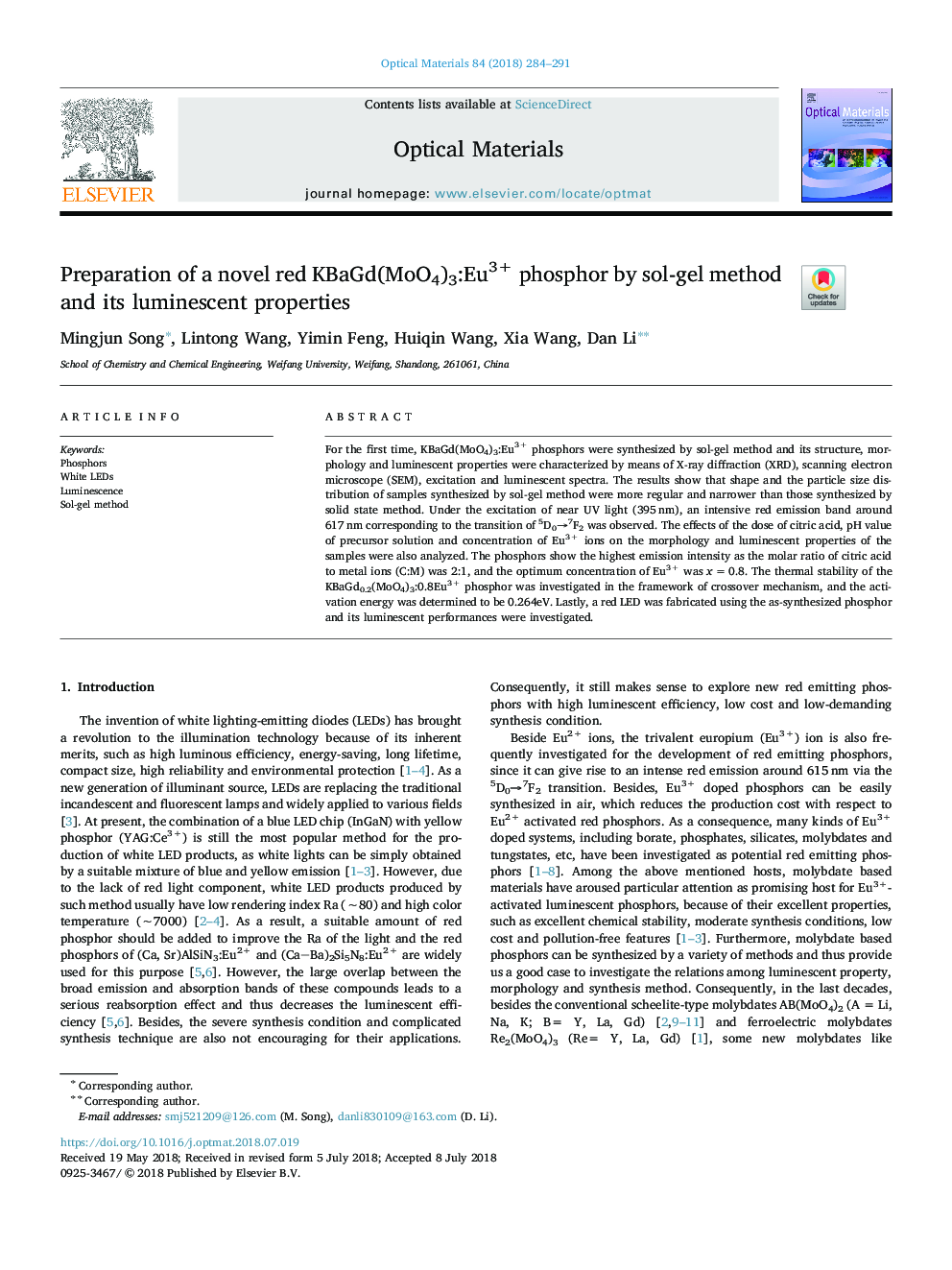| Article ID | Journal | Published Year | Pages | File Type |
|---|---|---|---|---|
| 7906172 | Optical Materials | 2018 | 8 Pages |
Abstract
For the first time, KBaGd(MoO4)3:Eu3+ phosphors were synthesized by sol-gel method and its structure, morphology and luminescent properties were characterized by means of X-ray diffraction (XRD), scanning electron microscope (SEM), excitation and luminescent spectra. The results show that shape and the particle size distribution of samples synthesized by sol-gel method were more regular and narrower than those synthesized by solid state method. Under the excitation of near UV light (395â¯nm), an intensive red emission band around 617â¯nm corresponding to the transition of 5D0â7F2 was observed. The effects of the dose of citric acid, pH value of precursor solution and concentration of Eu3+ ions on the morphology and luminescent properties of the samples were also analyzed. The phosphors show the highest emission intensity as the molar ratio of citric acid to metal ions (C:M) was 2:1, and the optimum concentration of Eu3+ was xâ¯=â¯0.8. The thermal stability of the KBaGd0.2(MoO4)3:0.8Eu3+ phosphor was investigated in the framework of crossover mechanism, and the activation energy was determined to be 0.264eV. Lastly, a red LED was fabricated using the as-synthesized phosphor and its luminescent performances were investigated.
Related Topics
Physical Sciences and Engineering
Materials Science
Ceramics and Composites
Authors
Mingjun Song, Lintong Wang, Yimin Feng, Huiqin Wang, Xia Wang, Dan Li,
